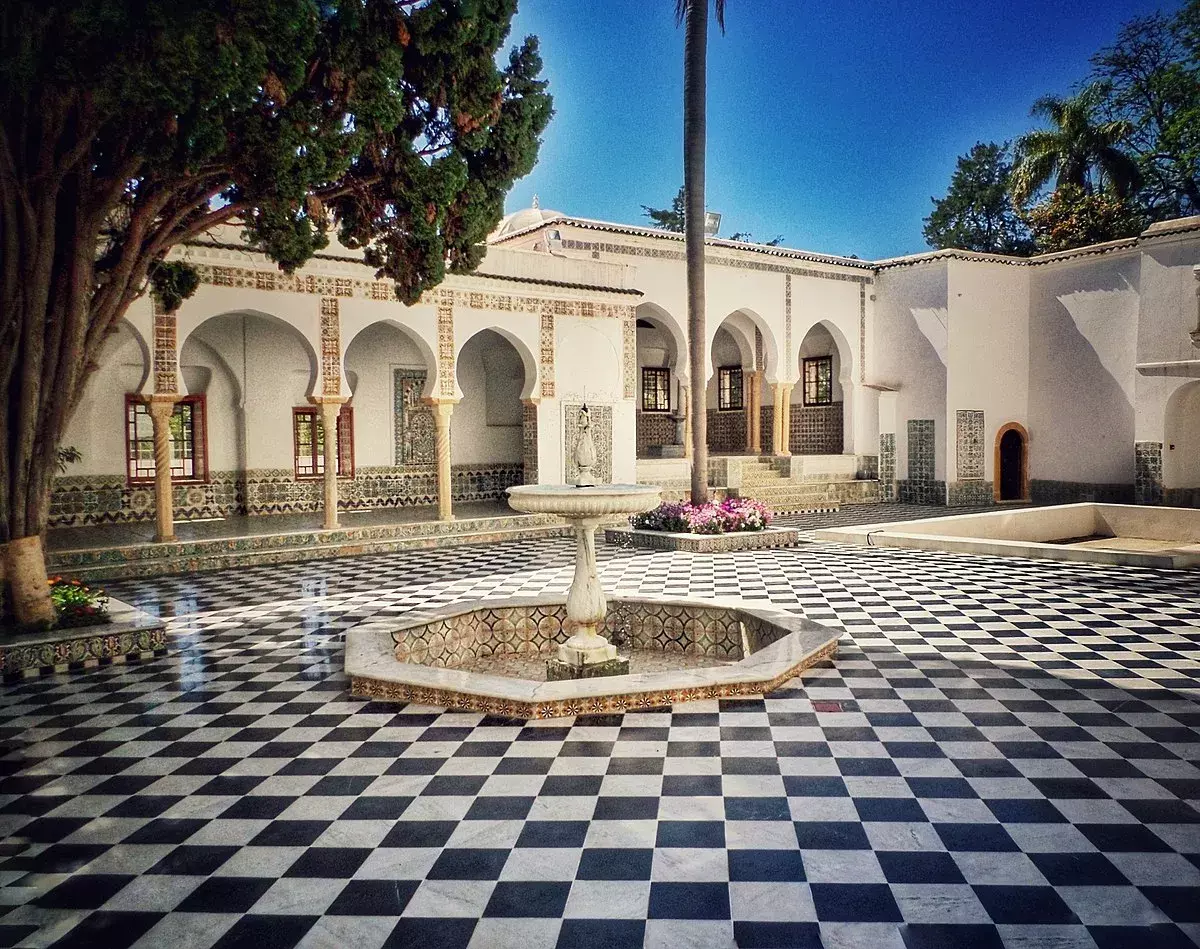
Bardo National Museum of Prehistory and Ethnography
Overall Rating: ⭐⭐⭐⭐☆ (4/5)
Rating Breakdown:
✔ Historical Significance – ⭐⭐⭐⭐⭐ (5/5)
✔ Exhibits & Collections: ⭐⭐⭐⭐☆ (4/5)
✔ Accessibility – ⭐⭐⭐☆☆ (3/5)
✔ Tourist-Friendly – ⭐⭐⭐☆☆ (3/5)
✔ Maintenance & Preservation – ⭐⭐⭐⭐☆ (4/5)
Weather
- Algiers experiences a Mediterranean climate characterized by hot, dry summers and mild, wet winters.
Tags
- Prehistory, Ethnography, Algerian Culture
Timings
- The museum is open daily from 9:00 AM to 5:00 PM.
Time Required
- A visit typically requires 1 to 2 hours to thoroughly explore the exhibits.
Entry Fee
- The entry fee is 200 Algerian Dinars.
Things to See & Do
- Prehistoric Artifacts: Explore a vast collection of fossils, Neolithic pottery, rock carvings, and examples of Neanderthal paintings from the Sahara, showcasing Algeria's prehistoric era.
- Ethnographic Exhibits: Discover displays highlighting the diverse cultures and traditions of Algeria's various ethnic groups, including traditional clothing, musical instruments, and household items.
- Architectural Appreciation: Admire the museum's setting within a former Moorish villa, featuring exquisite architecture, decorative designs, fountains, and pleasant gardens.
Best Time to Visit
- Spring (March to May) and autumn (September to November) offer pleasant weather, making it ideal for visiting the museum and exploring the surrounding area.
Nearest Parking Spots
- Limited street parking is available nearby; utilizing public transportation or taxis is recommended.
Overview
- The Bardo National Museum of Prehistory and Ethnography, located in Algiers, Algeria, is housed in a former Moorish villa built in the 18th century.
- Opened as a museum in 1927, it offers visitors a captivating journey through Algeria's rich history and cultural heritage.
- The museum's collections are well-displayed with videos, models, and excellent diagrams, providing insights into how the region's climate and environment have changed over time and how these changes have affected human and wildlife development.
- Main Exhibition Halls: Featuring prehistoric artifacts and ethnographic displays that narrate the story of Algeria's ancient civilizations and diverse cultures.
- Gardens and Courtyards: Beautifully maintained spaces that reflect traditional Moorish design, offering visitors a serene environment to relax and reflect.
- Language Considerations: Exhibit descriptions are primarily in Arabic and French; arranging for a guide or translator can enhance the experience for non-Arabic or non-French speakers.
- Photography: Verify any restrictions on photography within the museum to ensure compliance with regulations.
- Combine Visits: Consider visiting nearby attractions in Algiers to make the most of your trip.
- By Car: Accessible via the main roads leading to central Algiers; however, parking may be limited.
- By Public Transportation: Local buses and taxis are available; it's advisable to check current routes and schedules for convenience.
- On Foot: For those staying nearby, walking to the museum offers an opportunity to explore the surrounding area and enjoy the city's ambiance.